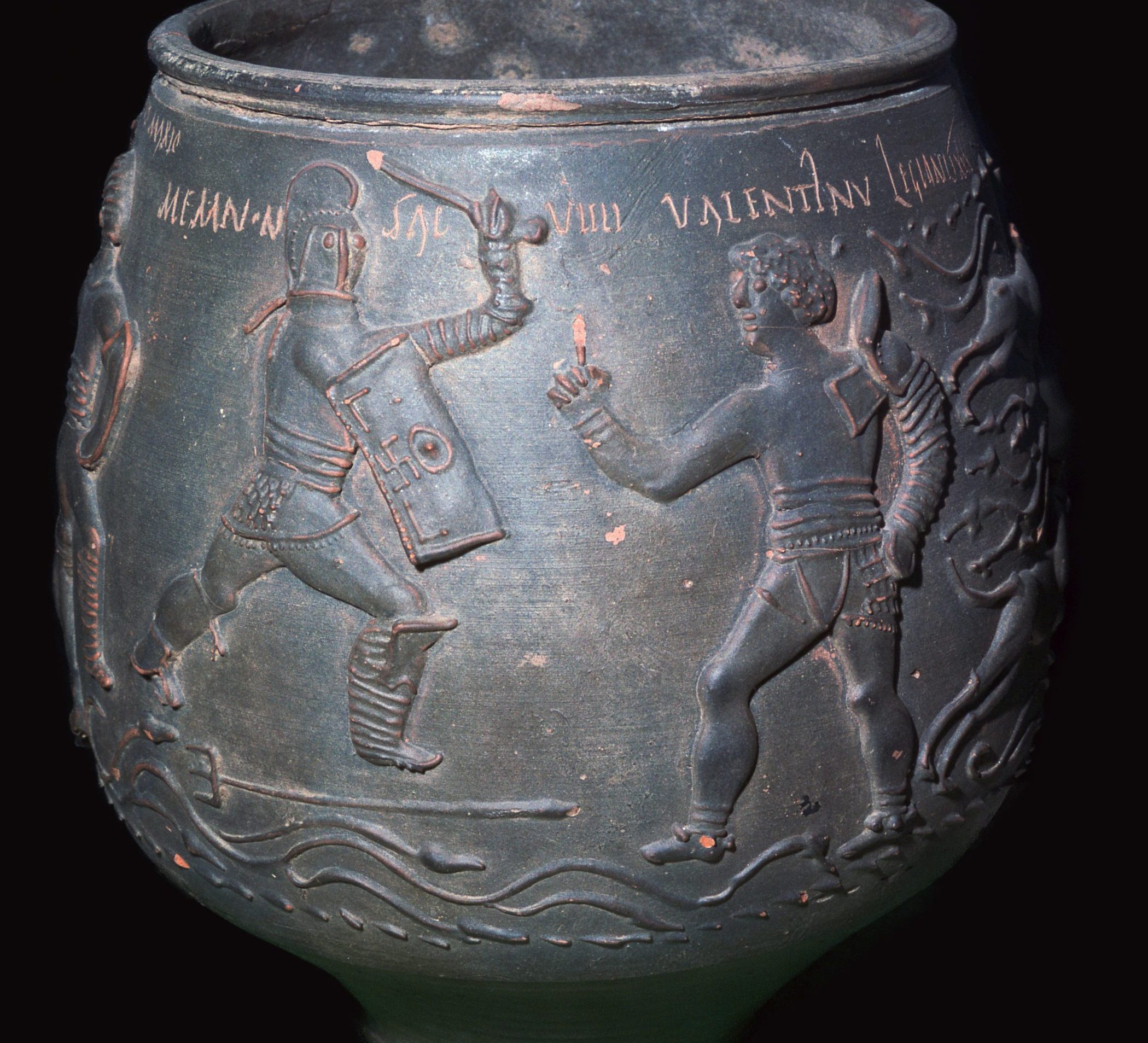
When it emerged from the ground in 1853 at West Lodge, England, the so-called Colchester Vase was immediately deemed an important find due to its remarkable decorative relief depicting a gladiatorial battle, which dated the piece back to Roman Britain. It was also considered a cremation vessel, having been found containing human remains. But new studies have found that the jar was no ordinary grave object—it could represent the earliest form of sports memorabilia.
Conducted by researchers at the Colchester and Ipswich Museums, where the artifact is held, the latest tests reveal that the vase was crafted out of local clay around 160–200 A.D.
They also found that an inscription on the vessel, spelling the names of two gladiators featured in the frieze, was carved into the clay before the vase was fired, not afterward as previously thought. The engraving, then, was a fundamental part of the Colchester Vase’s design and not added later.
The Colchester Vase. Photo: Colchester and Ipswich Museums.
“A lot of other artifacts that decorate gladiator scenes are generic, mass-produced pieces, so now that we know the inscription was part of the pot’s original design, it means it’s not a generic piece,” said Glynn Davis, CIMS senior curator and archaeologist, who also told the Guardian: “It’s a commemorative piece, almost a trophy for the trophy cabinet,”
The team further believes that the vase could have been commissioned by a gladiator owner, trainer, or sponsor, or perhaps a sports fan.
“There must be an intimate connection with the deceased,” Davis added of the remains found in the vessel. “They could well have sponsored the games. Or they were an absolute sports nut. For whatever reason, they saw the fight and thought, ‘I want a memento of that.’”
The Colchester Vase’s continuous narrative frieze features three scenes in barbotine style relief, all illustrating arena spectacles. In one, two hunters battle a bear with a whip and cudgel; in another, the pair of gladiators, Memnon and Valentinus, go head to head; and in the last, a hunting dog pursues a hare and two stags.
The inscription that was fired into the pot runs just under its rim, and informs us that the scene marked Memnon’s ninth victory in the ring and that Valentinus was of the Roman army’s 30th legion. Both gladiators, CIMS has concluded, could have been popular “celebrity gladiators of their day,” though they were also indentured slaves.
The Colchester Vase. Photo: Colchester and Ipswich Museums.
The research team also believes that such sporting events, particularly the ones pictured on the vase, quite likely took place in Colchester itself. Scientific tests on the clay used to make the vessel have uncovered links with the DNA of other similar artifacts discovered in Colchester, which, under Roman occupation, was known as Camulodunum.
“It’s the only evidence of a Roman arena gladiator combat actually being staged in Britain,” Frank Hargrave, CIMS director, told the Guardian.
“This is a specific scene, it has to be representing a specific event. We conclude it was in Colchester, as it was made here and buried here later,” Davis continued, adding of the importance of the new study: “I’d say it is really significant in terms of Roman Britain and finding real performers and real people who would’ve been in a battle at Colchester.”
The Colchester Vase, along with other Roman-era artifacts, will be on view at “Gladiators: A Day At The Roman Games,” an exhibition at Colchester Castle opening July 15.